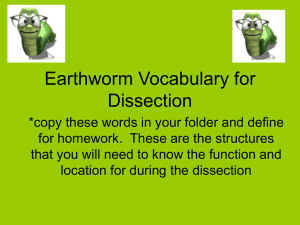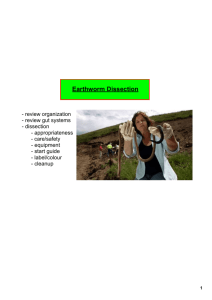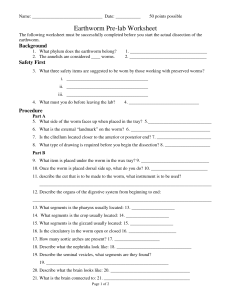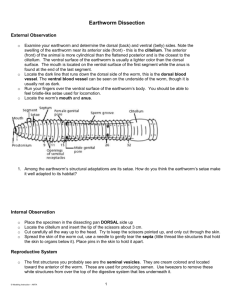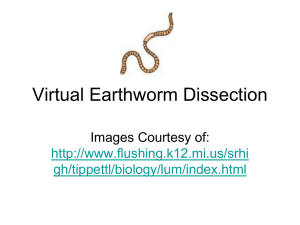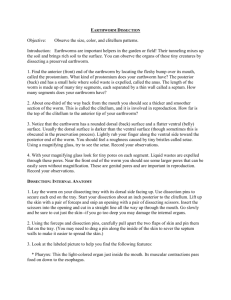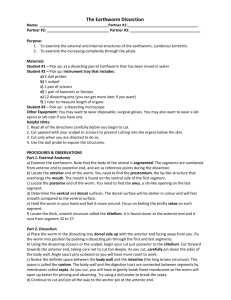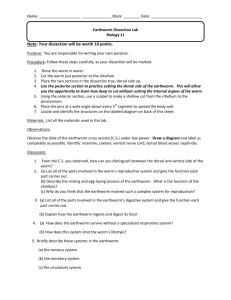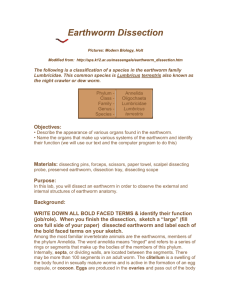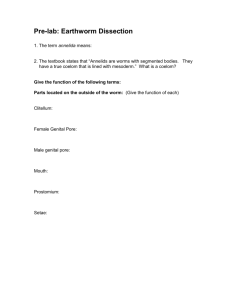Earthworm Dissection
advertisement
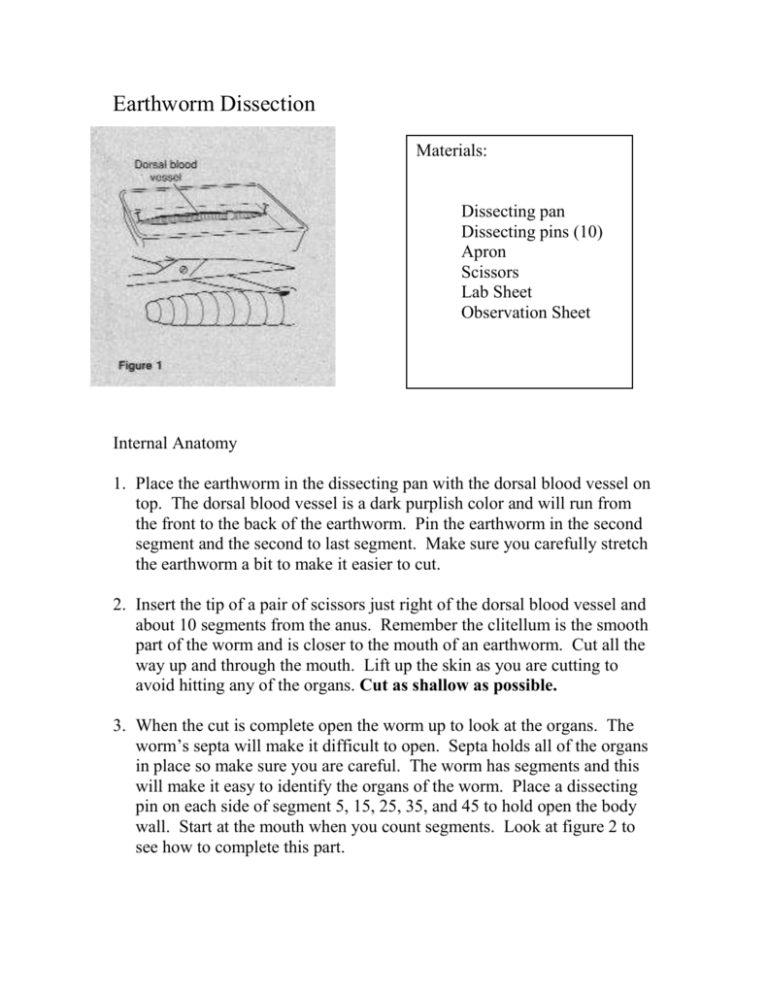
Earthworm Dissection Materials: Dissecting pan Dissecting pins (10) Apron Scissors Lab Sheet Observation Sheet Internal Anatomy 1. Place the earthworm in the dissecting pan with the dorsal blood vessel on top. The dorsal blood vessel is a dark purplish color and will run from the front to the back of the earthworm. Pin the earthworm in the second segment and the second to last segment. Make sure you carefully stretch the earthworm a bit to make it easier to cut. 2. Insert the tip of a pair of scissors just right of the dorsal blood vessel and about 10 segments from the anus. Remember the clitellum is the smooth part of the worm and is closer to the mouth of an earthworm. Cut all the way up and through the mouth. Lift up the skin as you are cutting to avoid hitting any of the organs. Cut as shallow as possible. 3. When the cut is complete open the worm up to look at the organs. The worm’s septa will make it difficult to open. Septa holds all of the organs in place so make sure you are careful. The worm has segments and this will make it easy to identify the organs of the worm. Place a dissecting pin on each side of segment 5, 15, 25, 35, and 45 to hold open the body wall. Start at the mouth when you count segments. Look at figure 2 to see how to complete this part. 4. The first organs you identify are the reproductive organs. They are easy to find because they are white and located around the 10th segment from the mouth. 5. Now, locate the parts of the digestive system. Right behind the mouth in segments 3-6 will be the pharynx. Next, look at the esophagus located in segments 6-14 that leads to the crop. The crop is located in 15 and 16 and stores food until the gizzard is ready. The gizzard is in 17 and 18 where the food is ground up into smaller pieces using sand. What is the difference in the wall of the crop and the wall of the gizzard? The last part of the digestive system is the intestine, which runs from the gizzard to the anus. 6. On lab sheet #1, label the following parts of the earthworm’s digestive system: mouth, pharynx, esophagus, crop, gizzard, intestine, and anus. 7. Next, trace the closed circulatory system of the earthworm. A closed circulatory system means there is a heart and blood vessels in the organism. First, in segment 7 to 11 are the five hearts of the worm. The hearts connect the dorsal blood vessel with the ventral blood vessel. Dorsal means to run along the back. Ventral means to run along the bottom or front. To locate the ventral blood vessel remove part of the intestine from the rear end of the earthworm. It will be located underneath it. The dorsal blood vessel should be easy to identify because it is the one that you cut to the right of at the beginning. 8. On lab sheet #2, label the following parts of the circulatory system: 5 hearts, dorsal blood vessel, ventral blood vessel, mouth, and anus. 9. On the back of lab sheet #2, draw what the earthworm’s circulatory system would look like if you were looking at the worm from the side. 10.On lab sheet #3, label the mouth, segment, clitellum, anus, and setae. 11.Try to locate the nerve cord of the worm, which should be close to the ventral blood vessel and look like a white train track running from the brain to the anus of the worm. 12. Now, clean up. Throw your earthworm in the basket. Be careful not to throw any dissecting pins away. Rinse your dissecting pan, scissors, and dissecting pins and put them back where you got them. Be sure to dry your scissors so they don’t rust. Put your goggles and apron back. Hand in your observation sheets and put the instruction sheets back on my desk. I need one copy of your observation sheets per group.
